Customizing: How we adapt BlueSpice to the wishes of our customers
5. February 2020
In short interviews with our employees, we bring you closer to questions from everyday work with BlueSpice. In this article we will focus on the topic of customizing. An interview with Sabine Gürtler, Team Lead Service & Support at Hallo Welt! GmbH.
Sabine, please explain: What is meant by customizing?
“Very simple: In our case, customizing is nothing more than adjustments to our wiki software BlueSpice that go beyond the product standard.”
So the customer has the possibility to “rebuild” BlueSpice according to his wishes?
Exactly. Only it is not the customer himself who does it, but we do. Specific customer requirements are always the starting point for a customizing project. It does not matter whether our customer uses a MediaWiki or BlueSpice – quasi the enterprise version of MediaWiki. Our developers implement customizations for both systems on customer request.
What exactly can be adapted in the customizing project?
Quite a lot. For example, it is possible to intervene in the standard workflow of BlueSpice. This applies, for example, to the modification of sets of rules regarding the release or comment function of an article.
In addition, some customers wish for an individual interface design. Minor adjustments to the corporate design guidelines of the customer are usually covered by our “Branding Package”. But sometimes we have to go a step further, e.g. to implement different user interfaces for wiki admins and wiki users. Another customer runs a public medical wiki and wants to deliver his wiki in the “look and feel” of a website. No problem for us. Yet another customer wants an individual wiki start page in the “portal look” of an intranet to provide employees with specific information and to encourage them to use the company wiki.

With the Ryte Suite, Munich-based Ryte GmbH markets a software that helps digital marketers, agencies and freelancers to design their websites as well as possible. The Ryte wiki is an essential component of Ryte’s online offering and has established itself as the leading wiki for all aspects of digital marketing.
Read the success story of Ryte GmbH here …
Go to the Ryte marketing wiki …

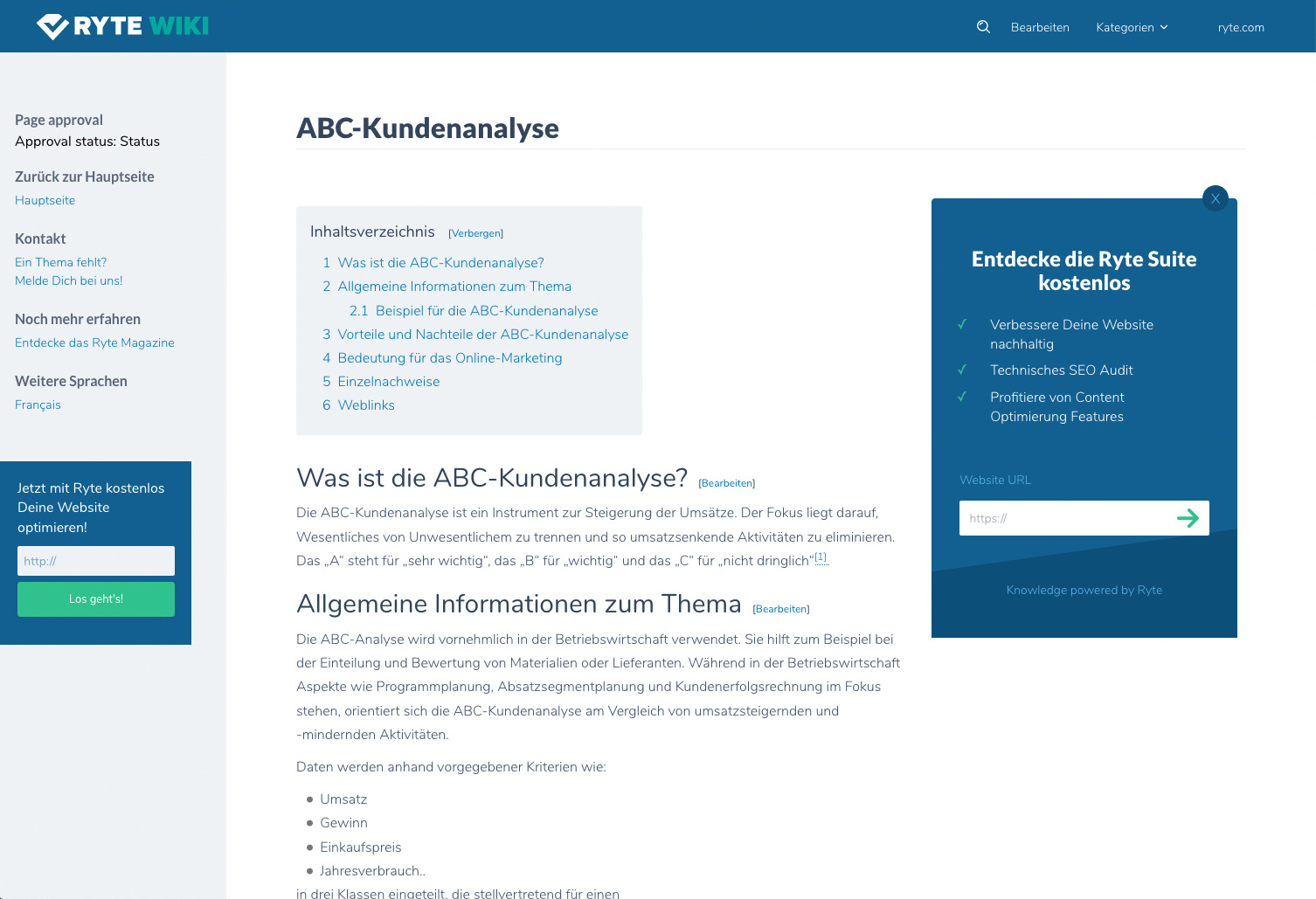
Screenshots: Ryte marketing wiki (individual skinning)
Sounds exciting. Is there more?
Absolutely. For example, there are customers who want to adapt or extend existing Wiki functions. At the moment we are implementing, for example, special upload notifications, PDF export of various Wiki page types and a “push and merge function”. This involves transferring content from one Wiki to another – including automated checking for redundant content.
When it comes to customizing, one should not forget the development of technical interfaces to the customer’s existing IT systems, e.g. in the form of search connections to the intranet.
But routines for data migration or synchronization can also be adapted. A great example of this is a customer who wanted Word files stored on his internal drive to be automatically imported into his company wiki. This is done via regular synchronisation in the form of a “CronJob”. So you see: Almost everything is feasible.
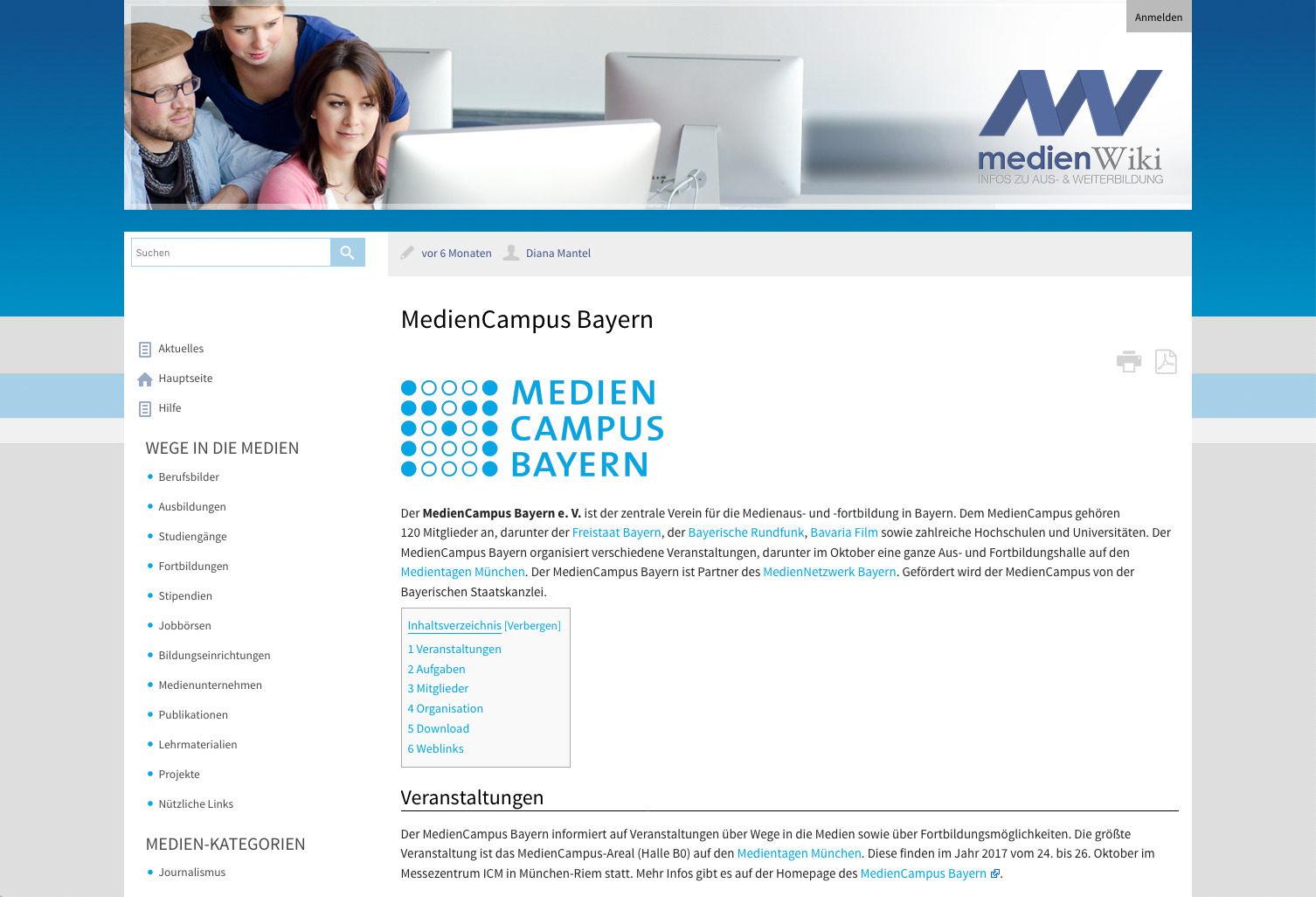
MedienCampus Bayern e. V., supported by the Bavarian State Chancellery, is the central association for media education and training in Bavaria. Among its members are numerous universities, academies and associations as well as media such as Bayerischer Rundfunk and Süddeutsche Zeitung. But how do you get your dream job in the media industry? What training opportunities are there? Do you have to study for it? What are the necessary requirements? Answers to all these questions can be found in the MedienWiki.

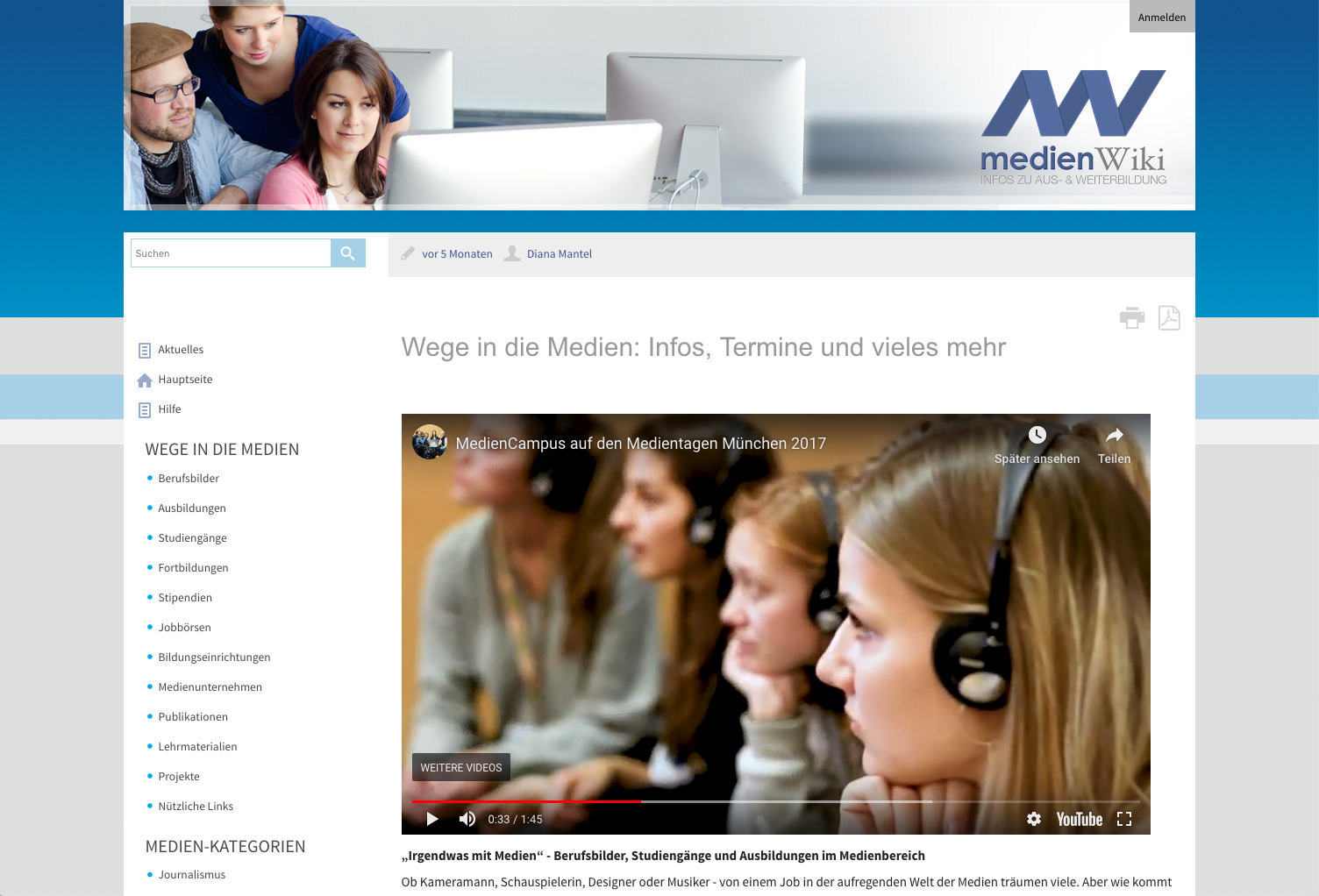
Screenshots: MedienWiki of the Media Campus Bavaria (individual skinning)
Almost everything? Are there exclusion criteria?
Yes, there are. Since we avoid so-called “core hacks”, the prerequisite for customizing is a corresponding interface (hook / API) in the basic software on which BlueSpice is based: MediaWiki. We do not interfere with the MediaWiki code, because this would cause problems when updating and maintaining the system. This would have a negative impact on the stability, system security and sustainability of the system. We want to avoid this as much as possible. In case of critical customization requests we will always try to find a solution via workarounds. It is important that the cost-benefit ratio is right. Of course we advise our customers in advance whether an adaptation makes sense from our point of view or not.
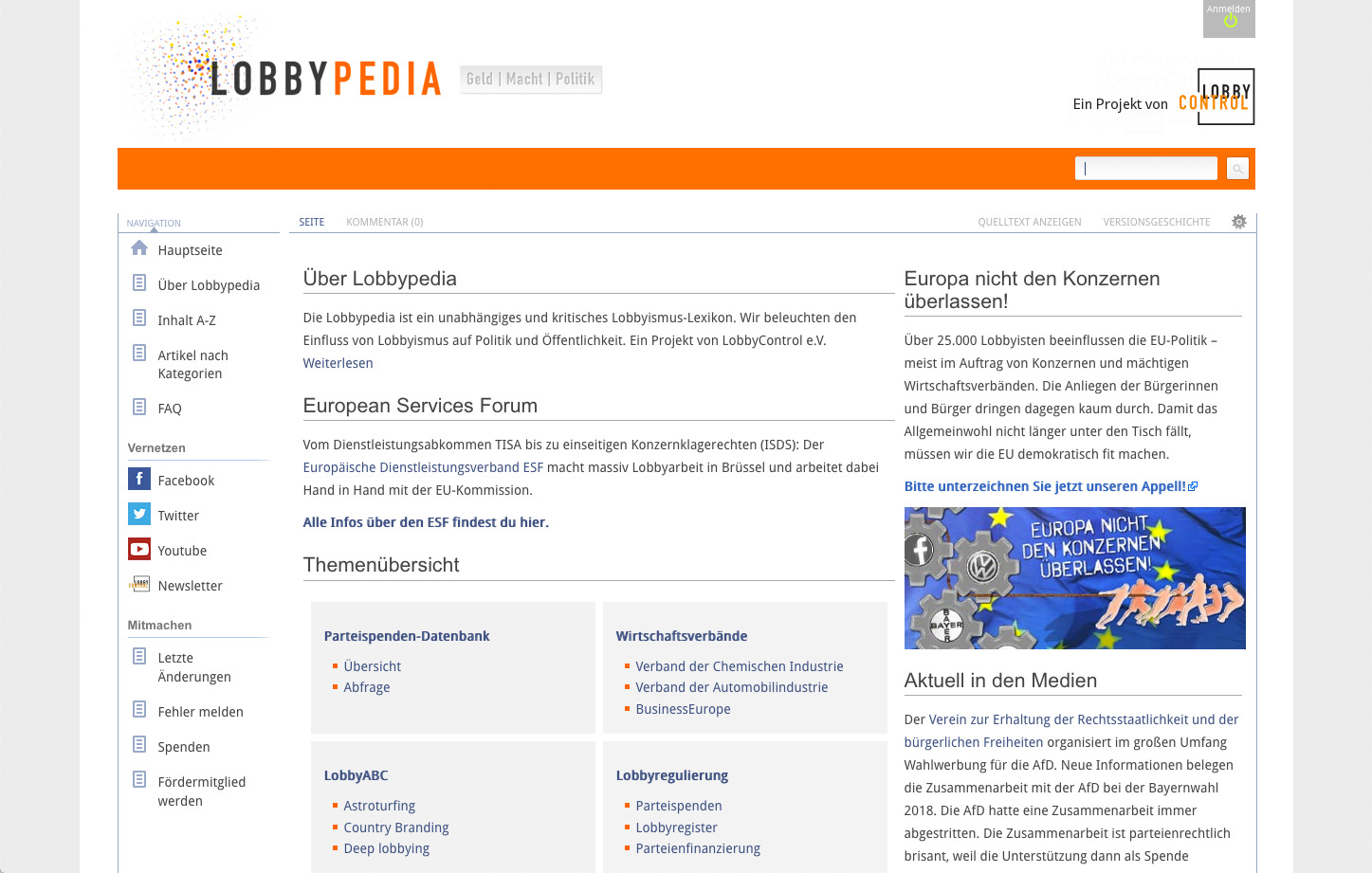
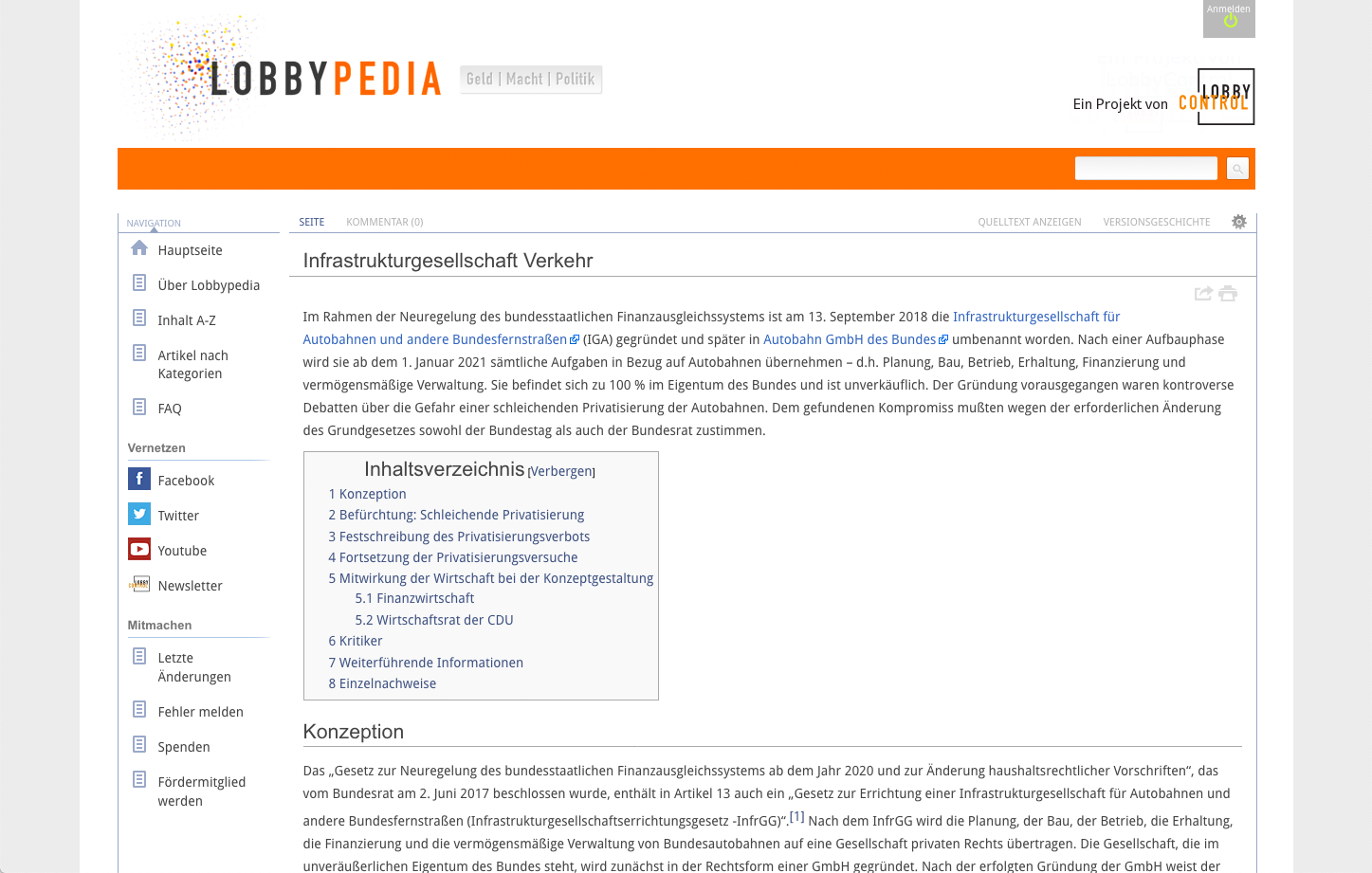
The Lobbypedia is an independent, lobby-critical online encyclopaedia. The platform collects and organizes knowledge, data, facts and connections about influencing politics and the public. Lobbypedia is provided and financed by LobbyControl e.V.
And how do customizations affect the standard product?
Normally, you program your own customer-specific enhancements for customizing. However, customizations that are useful for all BlueSpice customers are transferred to the standard product. Recently, this has involved, for example, usability optimizations, improvements in statistical evaluations or a simplification of image insertion in the visual editor. In the case of adaptations that have a very deep impact on the programming code, we also check whether standardization makes sense. Important: The decision whether an adaptation becomes a standard is up to us, the Hallo Welt! GmbH.
O.K. But what is the benefit for the customer if his customization becomes standard for all customers?
Good question. The customer in the form of the client of the customizing benefits of course. For one thing, there is the maintenance effort. This is omitted when the customization is transferred to our standard software. Thus the customer’s investment in “his” customization pays off. If an adaptation in a similar form as the customer wishes is on our agenda anyway, we will also contribute to the implementation costs. This considerably reduces the customer’s financial expenditure. But the customer also benefits in the long term: By transferring the customization to the standard product, we ensure that the function is continuously optimized and further developed. Good for the quality, good for the customer and good for us.
Last but not least: How does an adaptation process work?
After the customer has articulated a wish, our technical team checks the effort involved. Then we write an offer or, if necessary, present an alternative proposal. In the case of major adaptations, we draw up a specification sheet, which is accepted by the customer. This is then the basis for the technical implementation.
At the end of the day one thing is most important to us: A customer who gets exactly the BlueSpice Wiki he needs for the daily work in his company.
Share This Story, Choose Your Platform!
| Except where otherwise noted, news on this site is licensed under a Creative Commons Attribution 4.0 International license. |




